Finding the difference between the water filter and water softener is one of the most essential aspects that you would want to check out if you are interested in getting the best water treatment for your home water supply.
A water filter is a device that removes impurities from the water. It removes the bacteria, sediment, and a host of impurities from the potable water. A water softener, on the other hand, helps you remove the hard water minerals from the water. The ions, such as calcium and magnesium, are removed, and the water is softened.
What is a Water Filter?
A water filter or a water filtration system is a device that removes the contaminants, and all the dissolved solids from the water. It can remove the sediments and other solids from the water used for showering, drinking, and cooking. It can be helpful in improving the taste and smell of the water.

One of the excellent options that you can gain with the water filter is the ability to remove or reduce harmful chemicals from the water. The water can effectively remove the impurities such as lead, chlorine, and bacteria. Water filters can be made available in a host of options, such as a whole house, under-sink, countertop, and shower filters.
What is a Water Softener?
The water softeners are helpful in removing the minerals such as calcium and magnesium. The process of water softening is completed with a process called ion exchange. A water softener forces the water through a bed of beds that are covered in sodium ions.

The calcium and magnesium ions in the hard water are exchanged with the sodium ions, and thus the water gets softened. However, it will not filter out the harmful ingredients such as iron and other sediments or even microorganisms from the water. You would need a water filter for the purpose.
Water Filter vs Water Softener – How Do They Differ?
Water filters and water softeners are designed to perform different purposes in treating the water. They have their own distinct purposes to perform. A water filter removes the contaminants such as bacteria and sediments, while the water softener removes the hardness of the water by removing the hard water minerals such as calcium and magnesium.
Purpose
A water filter is designed to remove the impurities, contaminants, and particles from water, such as chlorine, sediment, bacteria, and heavy metals. It would help improve the taste, usability, and appearance of water. The water filter makes the water safe for drinking. A water softener, on the other hand, helps remove the hardness of the water. This will make the water safe for the appliances as it avoids the possibility of sedimentation and other issues that can affect your plumbing or even appliances. If you are wondering -can a water filter make hard water soft, the answer is emphatic No.
Mechanism
Water filters make use of physical, chemical, or biological processes for absorbing chemicals and impurities. Some of the water filters that have been popular include activated carbon filters, reverse osmosis filters, and ceramic filters. The water softener uses the principle of ion exchange to remove the minerals that make the water hard. It consists of resin beds that attract the calcium and magnesium ions
Maintenance
Water filters will need a regular maintenance to handle the functionality. You will need to replace the cartridges and filters from time to time. Water softeners to require a regular maintenance, and the prime need would b to replenish the salt required for the water softening process.
Cost
The cost of a water filter and water softener will largely be dependent on the size, type, and brand of the softener and filter. Under most of scenarios, water filters are costlier than water softeners.
The table below should provide you with an idea into the differences between a water filter and a water softener.
| Feature | Water Filter | Water Softener |
| Purpose | Remove impurities and contaminants from water | Remove minerals that cause water hardness |
| Mechanism | Physical, chemical, or biological processes | Ion exchange process |
| Maintenance | Replace filters or cartridges | Replenish salt used for the ion exchange process |
| Cost | Generally less expensive than water softeners | Generally more expensive than water filters |
| Benefits | Improves taste, odor, and appearance of water | Reduces soap scum, mineral buildup, and dryness |
| Drawbacks | It may not remove all contaminants or minerals | Adds sodium or potassium to water |
| Suitable for | Municipal water or low levels of hardness | High levels of hardness in well water or city |
| Recommended use | Drinking, cooking, and bathing | Reducing hard water problems in the household |
Types of Water Filters
The major types of water filters would include Reverse Osmosis, UV filtration, and carbon filtration. Each of them comes with their own plus points. The choice of the water filter depends on the amount of water quality and the home water system.
Reverse Osmosis
In this filter system, water is moved through a fine membrane to filter out the smallest of the particles. You would get access to the cleanest and best-tasting water for drinking and cooking.
UV filtration
UV filtration makes use of ultraviolet light to remove microbial-like bacteria and viruses from the water. It does not remove the chemicals and contaminants like chlorine or pesticides.
Carbon filtration
Water passes through the activated carbon filter and removes the chemicals such as chlorine, chloramine, volatile organic compounds, agricultural chemicals, and some minerals. It can also remove the microbial.
Boiled Water vs. Filtered Water – Which is better?
Boiling the water does not necessarily kill the bacteria or remove the chemicals from the water. The only way that you can remove it is through a water filter. Filtered water is more convenient and safer to drink than boiled water.
Boiled water is water that is heated to the boiling point of the water, which is 100 degrees C. Boiling kills most of types of bacteria, viruses, and other harmful contaminants. Boiling the water has been the most effective and straightforward method for water treatment. This can be the right option to make the water safer to drink. However, boiled water does not remove chemicals, heavy metals, or dissolved solids that may be present in the water.
The filtered water is the water that has been passed through the filtration system to remove the impurities and contaminants. The filtration systems will be helpful in removing the contaminants, including bacteria, viruses, chemicals, and heavy metals. The filtration system is used for water treatment, such as disinfecting and softening.
In essence, the boiled water is used for killing the bacteria and other microorganisms. The filtered water is used for removing the impurities and contaminants.
The table here should indicate the significant differences between the filtered water and boiled water.
| Boiled Water | Filtered Water |
| It kills most types of bacteria, viruses, and other microorganisms present in the water. | Removes impurities and contaminants such as chemicals, heavy metals, and sediment from the water. |
| It does not remove contaminants that are not affected by boiling, such as chemicals and heavy metals. | It can remove a wide range of contaminants, depending on the type of filter used. |
| Does not affect the taste or odor of the water. | It can improve the taste and odor of the water, depending on the type of filter used. |
| Requires a heat source to boil the water. | Requires a filtration system or device to filter the water. |
| Does not require any special equipment or maintenance. | Filtration systems require regular maintenance to ensure proper function and effectiveness. |
| Boiling can consume energy and contribute to greenhouse gas emissions. | Filtered water may be more environmentally friendly and sustainable than boiled water. |
Water Softener vs Reverse Osmosis – How Do They Differ From Each Other?
The reverse osmosis removes the salt, minerals, and any other impurities from the water. Water softeners use the ion exchange method to filter out the minerals such as calcium and magnesium from the hard water. This helps your water to stay soft.
Essentially, water softeners can condition the water, while reverse osmosis filters the water. The water softeners utilize the ionization process for replacing the magnesium and calcium ions in the water with sodium or salt ions. A water softener provides you with the following benefits:
- Natural taste to the water.
- Brighter clothes
- Long lasting appliances
- Spotless, shiny dishes
- Softer skin and hair
The significant differences between the water softener and Reverse Osmosis would include
Water quality
The water softener is useful in removing the magnesium and calcium levels in the water. But, it will not be able to remove harmful contaminants from the water. That is why there may be better options for drinking than softened water. The reverse osmosis filters will help you remove harmful and inorganic substances in water.
Taste
A reverse osmosis filter can remove 90% of the chemicals from the water. The taste of water is largely affected by the amount of minerals in it. The water softener, on the other hand, removes a host of magnesium, calcium, and iron in water and renders it fit for daily usage. The taste may be slightly affected by the addition of the sodium to the water.
Efficiency
The cost of the Reverse osmosis may be expensive. The RO systems have a daily limit and thus will require pre and post treatment of the water. The water softener system may also have its own limits, but there are several means to help you ensure that there is no disruption in the service.
Repair and maintenance
The RO system requires a periodic filter changes, and they are quite easy to handle. Water softeners demand a regular and periodic pre filter changes along with the salt additions.
The table here should be helpful in finding the right differences between a water softener and reverse osmosis:
| Reverse Osmosis | Water Softeners |
| It uses a semipermeable membrane to remove dissolved solids, minerals, and other contaminants from water. | Removes hard water minerals such as calcium and magnesium through ion exchange or salt-based systems. |
| It can remove a wide range of contaminants, including dissolved solids, heavy metals, bacteria, and viruses. | It only removes hard water minerals and does not address other contaminants in the water. |
| It can significantly reduce the total dissolved solids (TDS) in water, making it highly purified. | It does not reduce the TDS in water and may even increase it slightly due to the addition of sodium ions in some systems. |
| Requires a high-pressure pump to force water through the membrane, which can be energy-intensive. | It does not require a high-pressure pump and is generally less energy-intensive than reverse osmosis systems. |
| It may produce wastewater as a byproduct of the filtration process, which can be a concern in areas with limited water resources. | It does not produce wastewater but may require the periodic addition of salt or other regeneration agents. |
| It can be more expensive to purchase and maintain than water softeners. | It can be less expensive to purchase and maintain than reverse osmosis systems. |
| It can significantly improve the taste, odor, and overall quality of the water. | It can improve the taste and feel of the water by reducing its hardness, but it may not address other quality issues. |
Key Takeaway
The key features of the water filters and water softeners can be understood in a better manner.
| Water Treatment method | What does it Remove | The end Result |
| Water Softener | Calcium and magnesium | Soft water, no scale on plumbing fixtures, dishes etc. Does not remove any contaminants. |
| UV Filtered Water | Bacteria and viruses | Safe drinking water but may not improve the taste |
| Carbon Filtered Water | Chemicals, sediment, minerals, bacterial organisms | Safe drinking water may not improve the taste |
| Reverse Osmosis Water | Dissolved solids, chemicals, minerals, and some microbial organisms | Safe drinking water improves the taste |
Why is a Water Filter Better Than a Water Softener?
The water softeners tend to fix the issues such as the spots on your dishes and calcium buildup on the appliances and faucets. The water filters do provide you a better tasting and cleaner water by removing the contaminants. The water filter can remove the chemicals and items such as arsenic, lead, copper, iron, cadmium, and hexavalent chromium.
If your aim is to remove the contaminants and harmful chemicals from your water, a water filter should be the right pick to go with over a water softener. When you use a whole house water filter system, you will be able to remove the harmful ingredients and chemicals such as chlorine, chloramines, harmful VOCs, and more.
The water softeners can make the water softer and reduce the damage to the appliances. However, there are better picks than softened water for safer drinking or cooking water as it cannot remove the chemicals and contaminants.
FAQs
The Concluding Thoughts
Most of us need clarification about the water filters and water softeners. That is why we came up with this post to help you understand the major differences between the two water treatment options. Check out the best options that you would find quite interesting and unique in its own right.

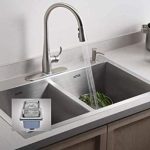
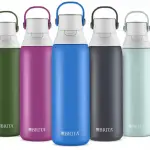
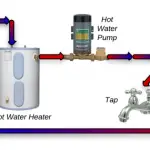
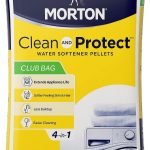
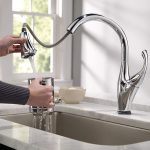
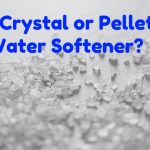





Add Comment